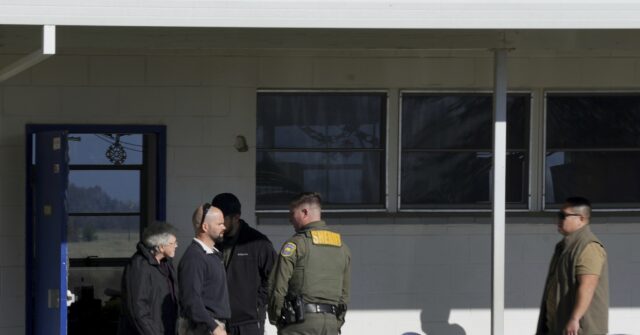On a tragic Wednesday in Palermo, California, a man identified as Glenn Litton, who was homeless and had a history of mental health issues, carried out a shooting at the Feather River School of Seventh-Day Adventists. The attack left two boys, Roman Mendez, 6, and Elias Wolford, 5, in critical condition, though they are reported to be stable. Litton allegedly committed this act as revenge for what he perceived as a “genocide” occurring in Gaza due to Israeli military operations, alongside a broader angst towards U.S. involvement in conflicts, particularly those relating to Yemen. His motivations were detailed in a statement left behind, showcasing a distressing misdirection of his grievances onto innocent children, reflecting the dangerous blend of mental illness and extremist political beliefs.
The incident marked a rare case of gun violence in a small and rural private school setting, making it particularly concerning. The Feather River School has now become the smallest institution in the United States to experience such violence in the past twenty-five years. The act, while shocking in its specific context, also highlights a much larger problem surrounding gun violence in schools across the nation, igniting discussions about safety, mental health resources, and the societal factors contributing to such heinous acts. It is worth noting that schools traditionally perceived as safe environments for children are now increasingly viewed with apprehension due to the escalation of violent incidents.
Litton’s backstory and the circumstances surrounding the event reveal significant failings within mental health and social support systems. His history of criminal behavior and mental illness raises questions about how communities care for their most vulnerable members and prevent them from resorting to violence. With systemic issues regarding mental health being brought to light, specialists have called for enhanced support frameworks that proactively engage with individuals showing signs of distress or instability, aiming to deter them from acting out in destructive and harmful ways.
The broader implications of Litton’s actions also invite scrutiny toward societal narratives and how they can warp individual perceptions of justice. By claiming links between his act and international events, Litton exemplifies how the conflation of global conflicts can translate into local violence, often with disastrous consequences for innocents, such as the schoolchildren. The sensationalized narratives surrounding geopolitical issues can feed into an individual’s psyche, potentially leading to retaliation against unrelated parties, thus demonstrating the danger of interpreting complex conflicts in oversimplified and extremist frames.
In the aftermath of the shooting, discussions surrounding school security and preventive measures inevitably arise. Parents, educators, and policymakers are tasked with ensuring the safety of students while balancing the need for nurturing educational environments. The tragedy at Feather River School serves as a catalyzing moment for stakeholders to reevaluate existing safety protocols, emergency response strategies, and the integration of mental health education within the school curriculum. Promoting open dialogues about violence, its causes, and coping mechanisms can foster a more resilient community and a safer atmosphere for children.
Lastly, while the immediate focus remains on the recovery of the injured children and the investigation of the shooting, it is crucial to address the underlying issues that lead to such violence. A comprehensive approach that includes kindness towards those suffering from mental illness, advocacy for global awareness without resorting to violence, and the cultivation of supportive communities can help prevent future tragedies. Societal transformation is needed, emphasizing understanding rather than vengeance, to mitigate the cycles of violence that continue to affect innocent lives in America.

